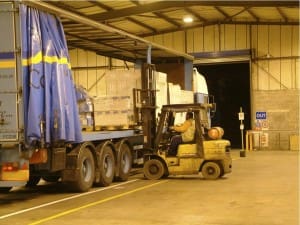 It was 30 years ago that Robert Fulghum first published his collection of essays “All I Really Need To Know I Learned in Kindergarten.” In the title essay, he provided a list of how to live, what to do, and how to be. First and foremost on his list was “share everything.” Software infrastructure was almost undoubtedly not what Robert had on his mind as he wrote his Credo many years ago, but the adage applies so well when discussing the benefits of multi-tenant technology.
It was 30 years ago that Robert Fulghum first published his collection of essays “All I Really Need To Know I Learned in Kindergarten.” In the title essay, he provided a list of how to live, what to do, and how to be. First and foremost on his list was “share everything.” Software infrastructure was almost undoubtedly not what Robert had on his mind as he wrote his Credo many years ago, but the adage applies so well when discussing the benefits of multi-tenant technology.
Instead of having software installed behind a company’s own firewall or simply hosted for the company on a dedicated instance managed by the vendor or some other third party, multi-tenant solutions have companies share the application and underlying infrastructure (e.g., hardware, operating systems, storage, etc.). The benefits of a multi-tenant software platform are immense.
Here are four areas of value with multi-tenant technology:
Connectivity – For applications that seek to connect users or companies to create a network, the need to be part of a multi-tenant environment is obvious. There would be no value in LinkedIn if you were not able to find, connect, and exchange ideas with other individuals. Similarly, in supply chain applications, you are heavily reliant on connectivity and communication with your supply chain partners including carriers, suppliers, and customers. A multi-tenant environment facilitates the real-time exchange of information among trading partners.
Lower Cost, Better Scalability – Multi-tenancy simultaneously lowers costs and improves scalability. With all participants sharing a common infrastructure, the cost of acquiring hardware and proprietary software licensing is spread across all users lowering the effective cost of the assets while ensuring access to a larger, more scalable pool of computing resources. Peaks and valleys in use are readily absorbed by the infrastructure when all users are on a common instance, and companies – both large and small – benefit from having access to a pool of resources much larger than anything they could cost-effectively deploy on their own. For supply chain applications, this often means faster, better optimization, more robust reporting, and quicker response times, which all contribute to increased effectiveness.
Powerful Analytics and Peer-based Benchmarking – The ability to aggregate data and uncover insights is drastically simplified in the multi-tenant deployment model. With all companies sharing a common codebase, a common data-store, and having a consistent definition of fields and functions, everything from user behavior to company metrics can be readily analyzed. By having simplified access to end user behavior including click paths, search criteria, common actions, etc., the guesswork is taken out of improving the user experience and workflow. By understanding how various companies are using the software, best practices are quickly isolated and can be shared across the network regardless of industry. And in the world of supply chain software, being able to easily aggregate and analyze cost and service data means companies can better understand how they are performing relative to their peers.
Worry-Free Upgrades – Multi-tenancy ensures companies have access to the latest features, functions, and security fixes. Participants don’t have to manage an upgrade cycle, worry about moving to the latest version, test for backwards compatibility, or fret about browser compatibility or dozens of other issues associated to trying to upgrade installed or hosted software. Multi-tenant providers are constantly adding new capabilities and rolling those capabilities out to their entire user base more quickly and more easily than vendors stuck managing hundreds or even thousands of installs. This upgrade cycle helps ensure companies are getting incremental value on a year over year basis as the software they use continues to evolve. For supply chain companies, this often means that they can continue to find savings through increased technology usage and adoption even after many years on a multi-tenant platform.
Sharing is not the easiest concept for a kindergartner to embrace, but in the technology field, it has been welcomed with open arms by companies like Salesforce.com, Intacct, and, of course, LeanLogistics. All three companies were founded in 1999, and survived the dot-com bubble, thrived during the global financial crisis, and continue to grow — thanks, in large part, to multi-tenancy.
—
Chris Johnson, Chief Technology Officer of LeanLogistics, oversees all research and development activity at LeanLogistics and is responsible for the LeanTMS® product roadmap. A LeanLogistics employee since 2004, Chris served as the lead technologist of several initiatives including optimization, LeanFleet®, LeanSource®, and LeanDex® before taking his current role. With a background in computer science and mathematics, his unique approach to software development continues to drive LeanLogistics’ technology solutions.

















